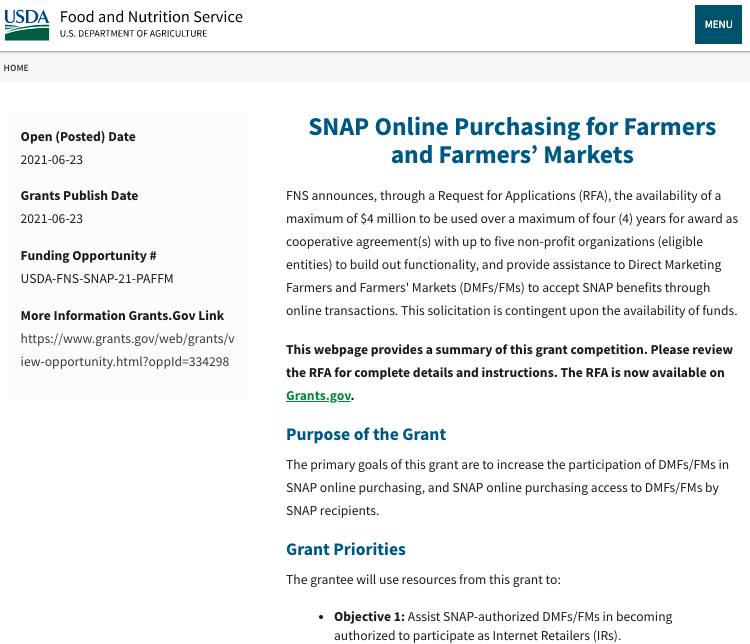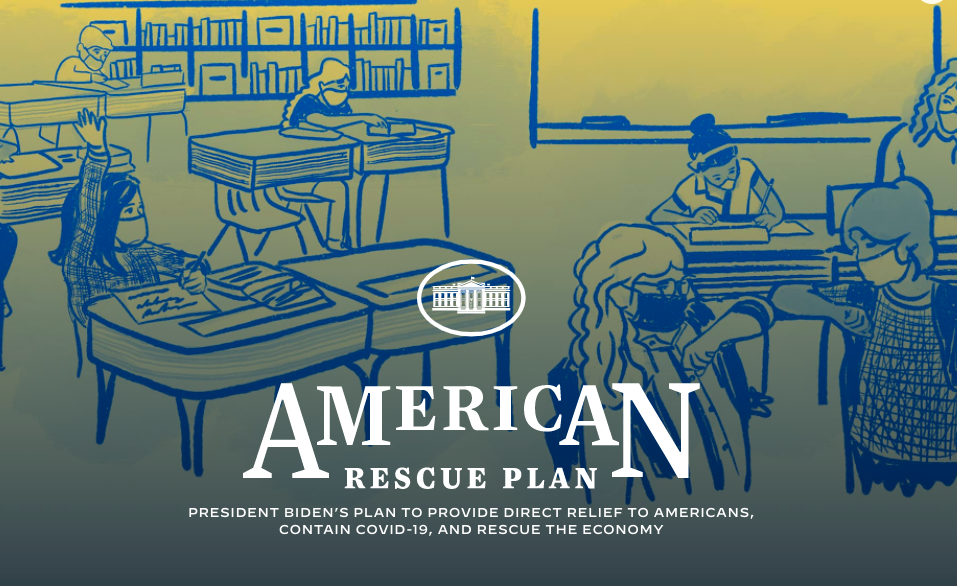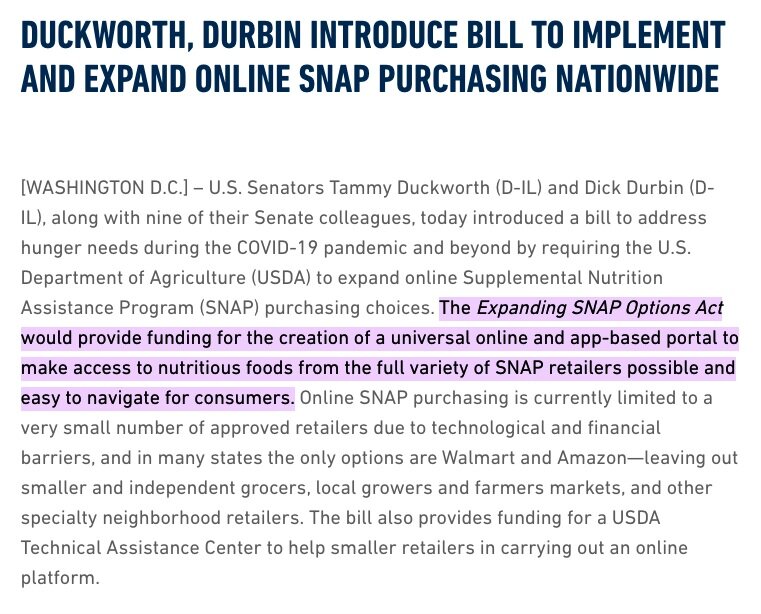Expanding SNAP Options Act of 2020
In March 2020, policymakers were urgently mobilizing to address the COVID-19 pandemic: the public health crisis, and the socioeconomic fallout. At the time, our advisor Ertharin Cousin - formers executive director of the UN World Food Programme - and her organization Food Systems for the Future - were working closely with Senator Durbin’s to develop crisis response food security legislation. SNAP Online Purchasing was an urgent policy priority.
We helped inform policy that was ultimately enacted in the American Rescue Plan.
We collected data, conducted interviews, and shared partners’ insight that helped inform the drafting of a SNAP Online bill. Senator Durbin introduced the bill in the US Senate on July 2, 2020 as the Expanding SNAP Options Act of 2020, and Representative Kelly introduced it in the House on September 3, 2020 in the House. The Senate Bill was reintroduced in February 2021 and in the House in April 2021.
Ultimately, recommendations from the bill were implemented in the December 27, 2020 Consolidated Appropriations Act of 2021 (also known as the COVID-19 Economic Relief Bill), which allocated $5 million for technical support within the SNAP online purchasing program, especially for farmers markets and direct marketing farmers, and called for the modernization of mobile EBT payment technologies. This funding was implemented in a USDA RFA, which was created to “award as cooperative agreement(s) with up to five non-profit organizations (eligible entities) to build out functionality, and provide assistance to Direct Marketing Farmers and Farmers' Markets (DMFs/FMs) to accept SNAP benefits through online transactions. This solicitation is contingent upon the availability of funds.”
In March 2021, the American Rescue Plan allocated an additional $25 million to “make technological improvements to improve online purchasing in the supplemental nutrition assistance program”, “modernize electronic benefit transfer technology”, “support the mobile technologies demonstration projects and the use of mobile technologies” and “provide technical assistance to educate retailers on the process and technical requirements for the online acceptance of the supplemental nutrition assistance program benefits, for mobile payments, and for electronic benefit transfer modernization initiatives.”



